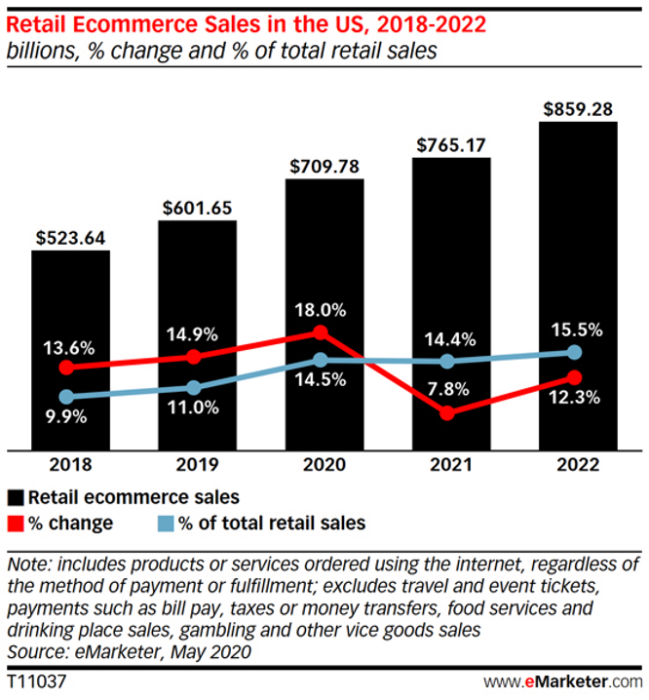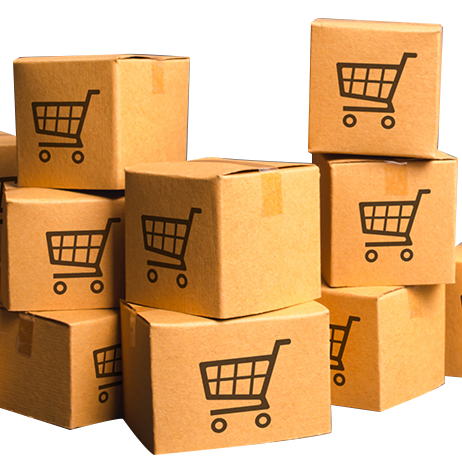E-Commerce, Distribution, and the New Normal
As you all have read, the beginning of 2020 saw unprecedented global economic collapse as the COVID-19 pandemic brought the U. S. ten-year economic expansion to a screeching halt. The impact of COVID-19 has been dramatic in scale and scope and something the world has not seen since the Great Depression or the Spanish Flu Pandemic of 1918-20.
In March 2020, as COVID-19 started to spread, states implemented distancing strategies to slow the contagion, including the closing of schools and non-essential businesses, restrictions on public gatherings, and ultimately issuing shelter-in-place orders. These containment measures led to a severe contraction in economic activity, as businesses and schools switched to remote work or shutdown operations, and consumers canceled, restricted, or redirected their spending.
As we all adapted to shelter in place edicts, e-commerce took on a more significant role in filling basic consumer needs for many of goods and services we typically go to store to obtain, primarily grocery and health related items.
Online sales surged because of the pandemic. The latest predictions are that U.S. e-commerce sales are expected to grow 18% to nearly $710 billion in 2020, representing 14.5% of total U.S. retail sales, while brick-and-mortar retail sales are expected to drop 14% to around $4 trillion. This surge in new online orders however will not make up for the overall hit that the U.S. retail sector will take this year. Analysts estimate that total U.S. retail sales, which also includes auto and fuel, will drop by 10.5% in 2020 to $4.9 trillion — a level not seen since 2016.

While the pandemic is causing people to shop online at a much higher rate, stocking up on basic goods, some people are also taking advantage of this pandemic. According to some reports, consumers are also buying more luxury items, taking advantage of massive discounts stores are offering to empty their stocks and generate some cashflow.
Although the growth of e-commerce has put a strain on distribution networks and businesses have slowly been rebuilding their supply chain networks, the pandemic has forced business to accelerate this transformation tenfold. While the shift to online shopping has reduced the reliance of brick and mortar store fronts, e-commerce also requires a substantial physical presence. Logistics companies are also looking at warehouses for their needs and that has also caused an increase in demand. While we would like to think that everything related to e-commerce happens online, all e-commerce companies require physical warehouses.
While most industries have been negatively impacted, commercial real estate, specifically warehousing, is booming. And not just the volume of activity but the prices as well. This is because while some companies are selling their warehouses, companies such as Amazon are gobbling them up. Some reports suggest that warehouses are the hottest investment opportunity right now. This means that while struggling companies are selling their excess or idle locations, others are seeing it as an opportunity to increase their distribution capacity…………….a trend that will continue for a while.
As Winston Churchill said, “never waste a good crisis” and some companies have used the e-commerce surge to ramp up their competition against the likes of Amazon, Walmart, and other large players. Google for example is now steadily on the path of transformation of its e-commerce platform into an Amazon competitor. The technology giant has been trying to recruit more sellers to Google shopping since it offered free listings of products on the e-commerce platform. Google Commerce President Bill Ready wrote, “These changes are about providing all businesses—from small stores to national chains and online marketplaces—the best place to connect with customers, regardless of where a purchase eventually occurs.” He further added that “with more products and stores available for discovery and the option to buy directly on Google or on a retailer’s site, shoppers will have more choice across the board.”
Most of us are guardedly optimistic we will persevere through the pandemic; vaccines will eventually eradicate the coronavirus and our lives will get back to “the new normal”. What can we expect going forward? I think we can expect to see a continued increase in e-commerce transactions and unfortunately for some, the on-going decline of brick and mortar. And until the distribution networks catch up with the changing e-commerce landscape, same day or next day deliveries may be far and few between. Like every evolving industry before it, e-commerce competition and advances in network efficiency should lead to lower costs for consumers and businesses.





